I played this spellbindingly complex 4X classic, and all I got was a lot of dead halflings
Ancient 4X Master of Magic has been revived, and is as dizzyingly brutal as they come.

Welcome back, then, Master of Magic, a 4X strategy game first published in 1994 for MS-DOS. Developed by Simtex and published by Microprose, Master of Magic entered a burgeoning strategy genre, which had already seen the likes of Civilisation, with a slightly wild 'anything goes' attitude towards turn-based combat and conquest. It's regarded as a stone-cold classic, but was also something of a buggy mess and subsequent years would see patched-up re-releases of the original, though never the sequel that some clamoured for.
Now it's the subject of a remake, and a game that sits in an odd limbo zone. This is not an all-singing, all-dancing reimagining of the game, nor is it a slavish, like-for-like redo of the original. It's an updated and polished version of the game that feels relatively comfortable to modern hands, but would never pass as a contemporary title.
Master of Magic is prettier than I was expecting. It's not a graphical powerhouse by any means, but everything's clean and clear and the portraits in particular are great: full of character and little kinks. I'm a particular fan of the familiar for the baddie dragon wizard, a plump little red imp with a salacious grin. Each of the wizards has these familiars, which provide basic tips and also act as your deputies. If a town's ticking over, leave it in the hands of your familiar to keep it that way.
As with any 4X game you're thrown into your first map and will be slightly bamboozled by a raft of different menus, options, UI overlays, and your wizard's particular familiar. The depth you can go into is intimidating but the top-level stuff is relatively easy to get your head around, and you can also automate elements of it. The game generates the world map and you start managing a small settlement with one army detachment, which you can quickly set exploring, and after a few turns you'll be gifted a ghost explorer unit.
What you won't get past, initially at least, is the difficulty. I played my first few maps on Easy before moving up to Normal and, in my very first combat encounter, ran about 24 halflings into a bunch of skeletons. Easy win for the lads, I thought, only to watch them all unceremoniously cut down. There's something quite charming about how retro Master of Magic is in this respect, or perhaps it's just my age, as the opposing units play their attack animation (usually a fairly simple stab), the damage number comes up, then if it was enough to destroy your unit you'll see six halfings upend themselves and fall dead in sync. And yeah, you'll be seeing a fair amount of that.
The beta version I was playing had three wizards, each with their own buffs and army type: Merlin, who goes with halflings and has research-based buffs; dark magic specialist Sharee; then my ultimate favourite, the dragon chaos wizard Sssra. He's got dragon-type warriors, very useful because they can simply float over water, making map navigation so much easier, and a whole bunch of fire spells to boot.
Regardless of which wizard you pick, though, or where you're intending your tech tree to go, those early stages are spent exploring, sticking your head into caves and finding enemy towns, and mostly avoiding fights while you build up an army. Even the basic enemy types like gnolls are capable of taking a few lumps out of you, though sheer force of numbers usually wins out. The maps are also populated with fantastical creatures (that's their in-game designation too) that come with delightful effects like poison, magic negation, and thwacking great damage counts that will flatten whole detachments at a time.
The biggest gaming news, reviews and hardware deals
Keep up to date with the most important stories and the best deals, as picked by the PC Gamer team.
There are two ways you start to negate the enemy advantage: first, by upgrading the types of troops you can produce and trying to make sure they get a few 'easy' fights in and some XP before you send them off to face a hydra. You can also, as things progress, start to hire your own 'hero' units. Then comes the game-changer: you're not just the commander here, but a master of magic.
Once a turn during combat, provided you have the various magical resources required, you can cast a spell. These can be buffs to your army units, which come in all stripes, landscape-altering spells, direct attacks on enemy units, 'control' spells like an immobilising web, and many more. In a game where the battles are usually a bit tighter than you might like, these interventions are often critical.
Now you might be thinking so far, so standard. But Master of Magic has a trick: in fact, it's got hundreds. The mistake I'd been making initially was to load up a game and just accept what the algorithm gave me. I'd land in an unforgiving little stretch of surrounded by hell-beasts with nary a treasure chest in sight and think "This is fine." But you don't have to take that.
First of all, you can just choose your own map parameters: I didn't really play around with this, but you can tweak a wide range of options to create a world along the lines you'd like: as lush or barren as you like. Secondly, which is what I did end up doing, you can just reload until you get something you like the look of, and then start delving into the fun stuff.
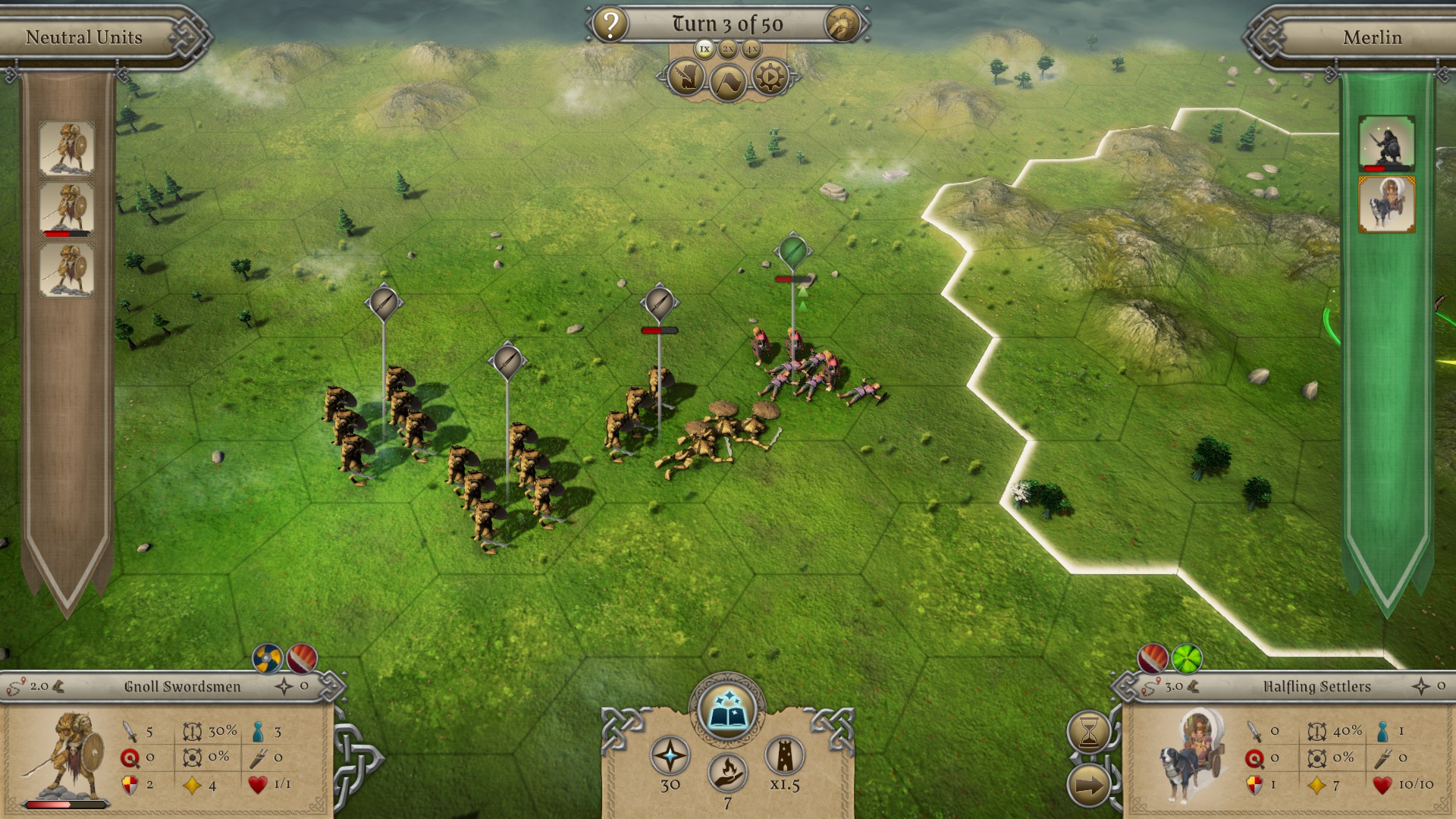
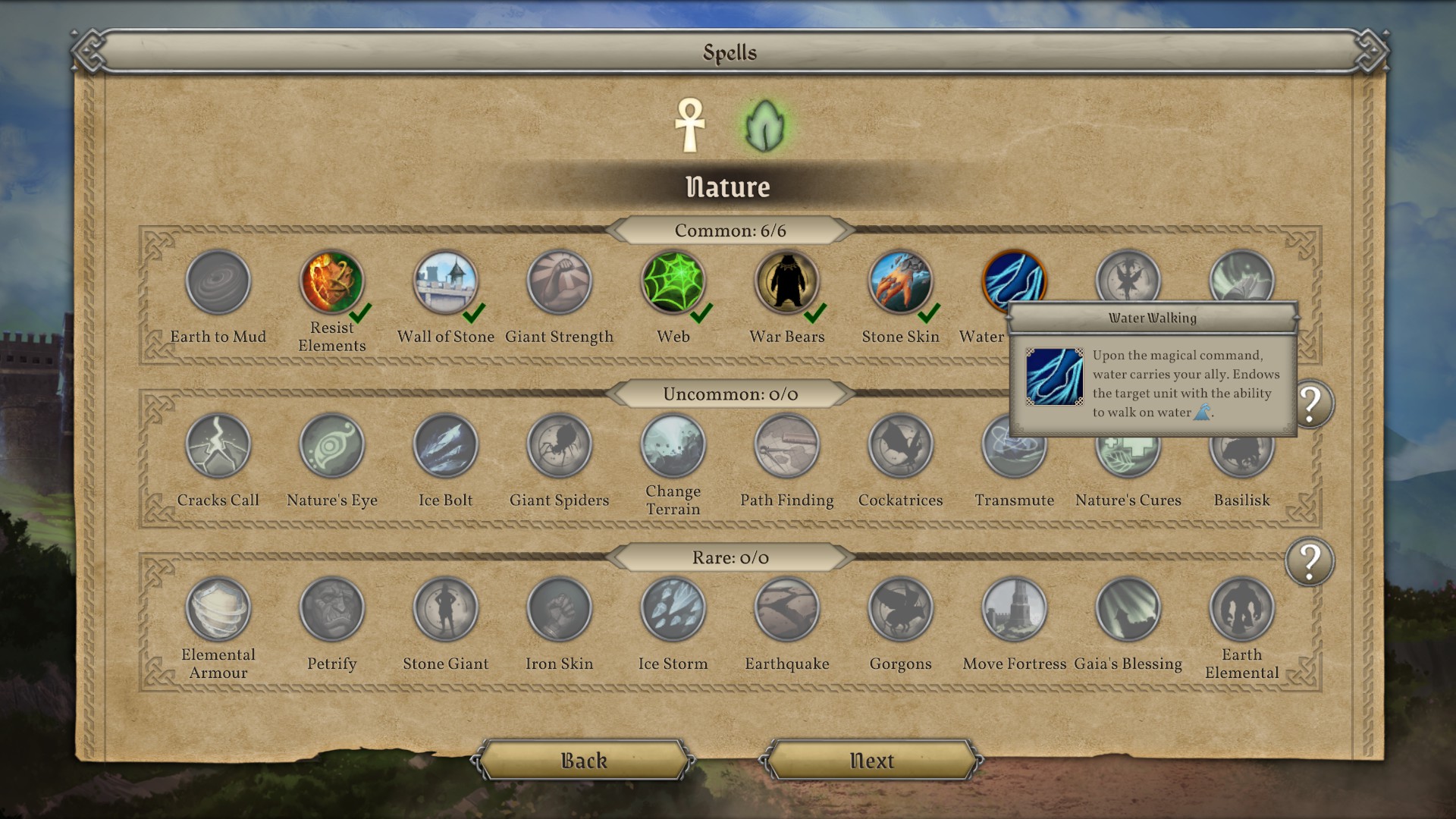
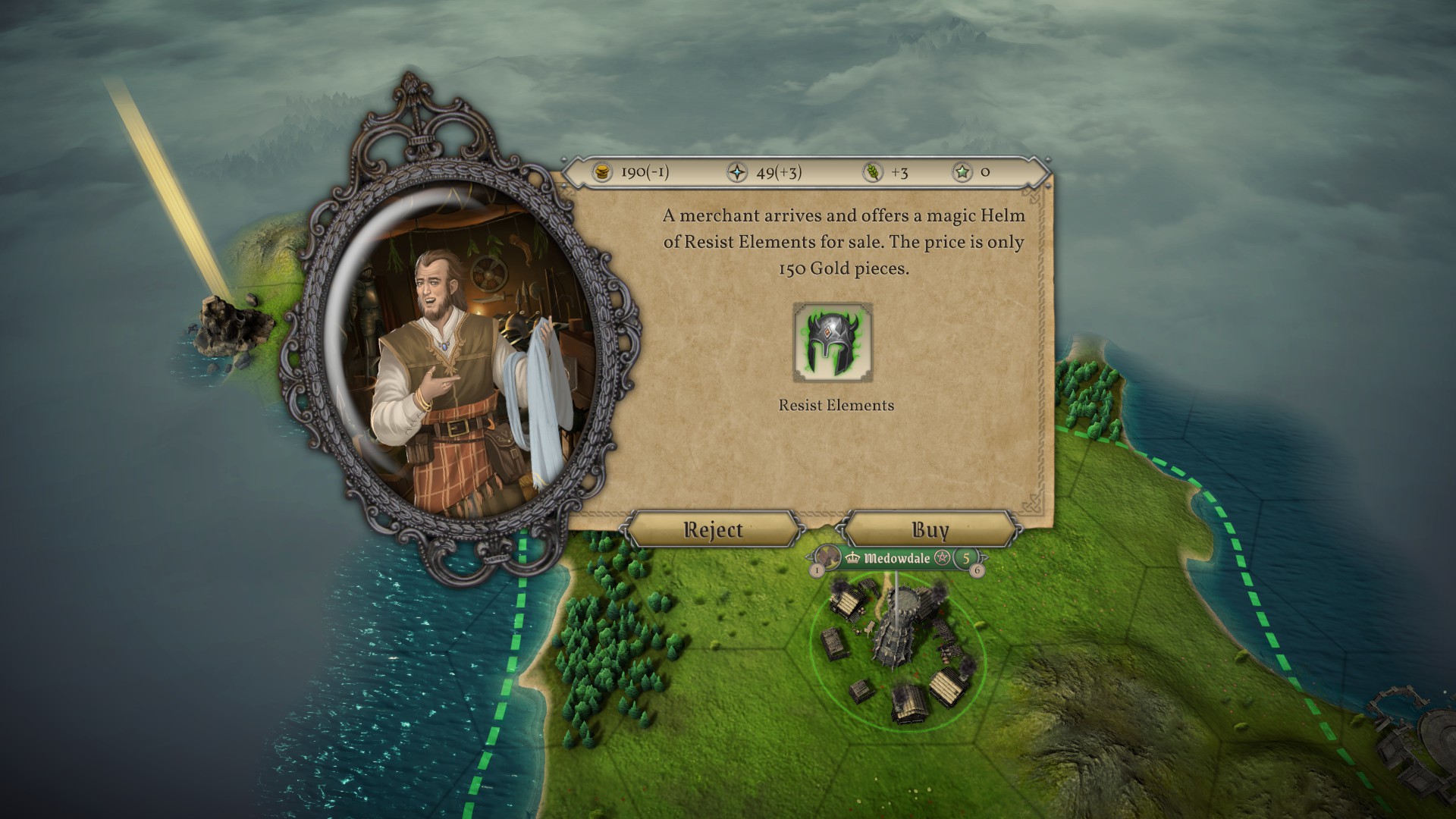
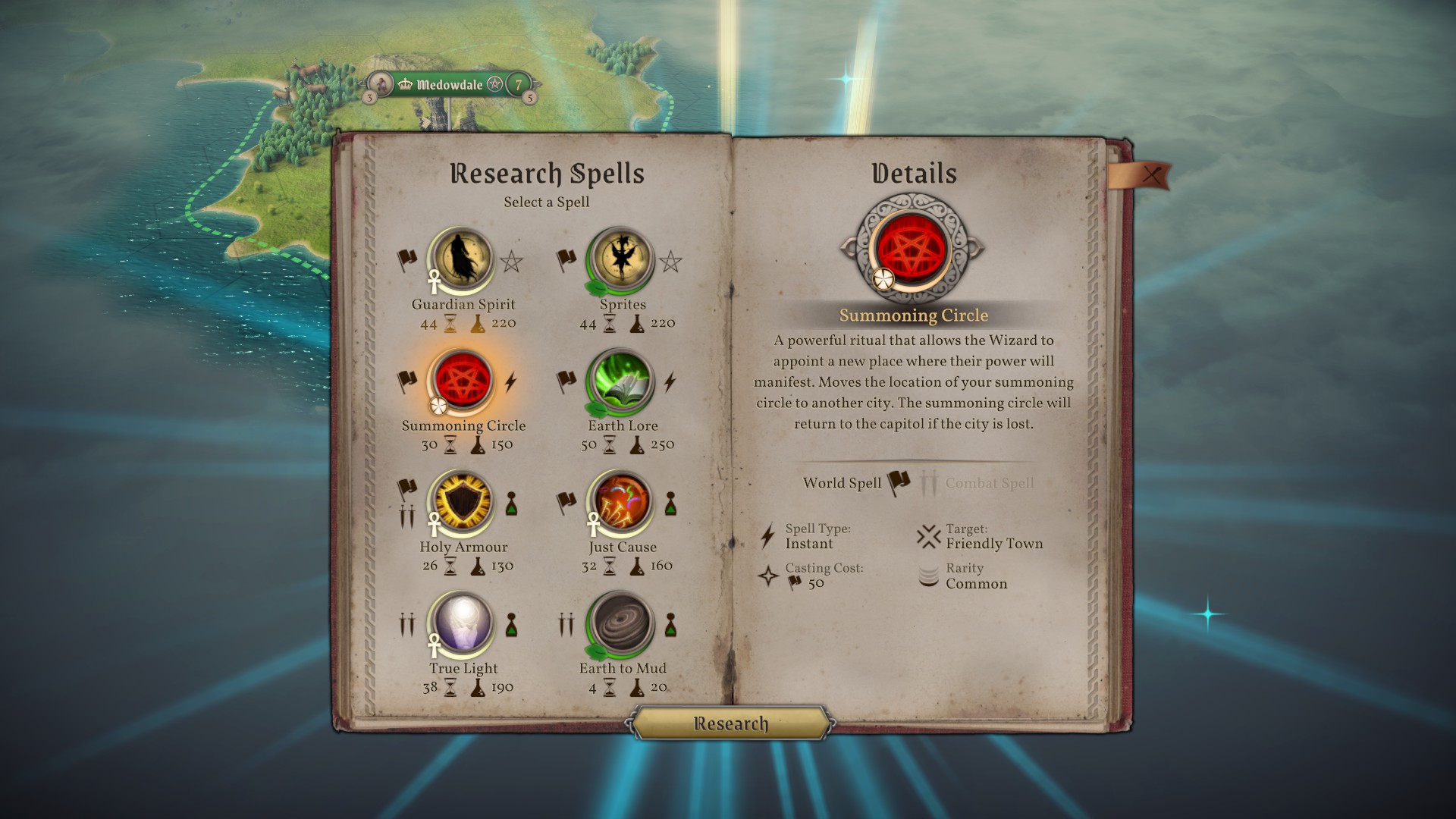
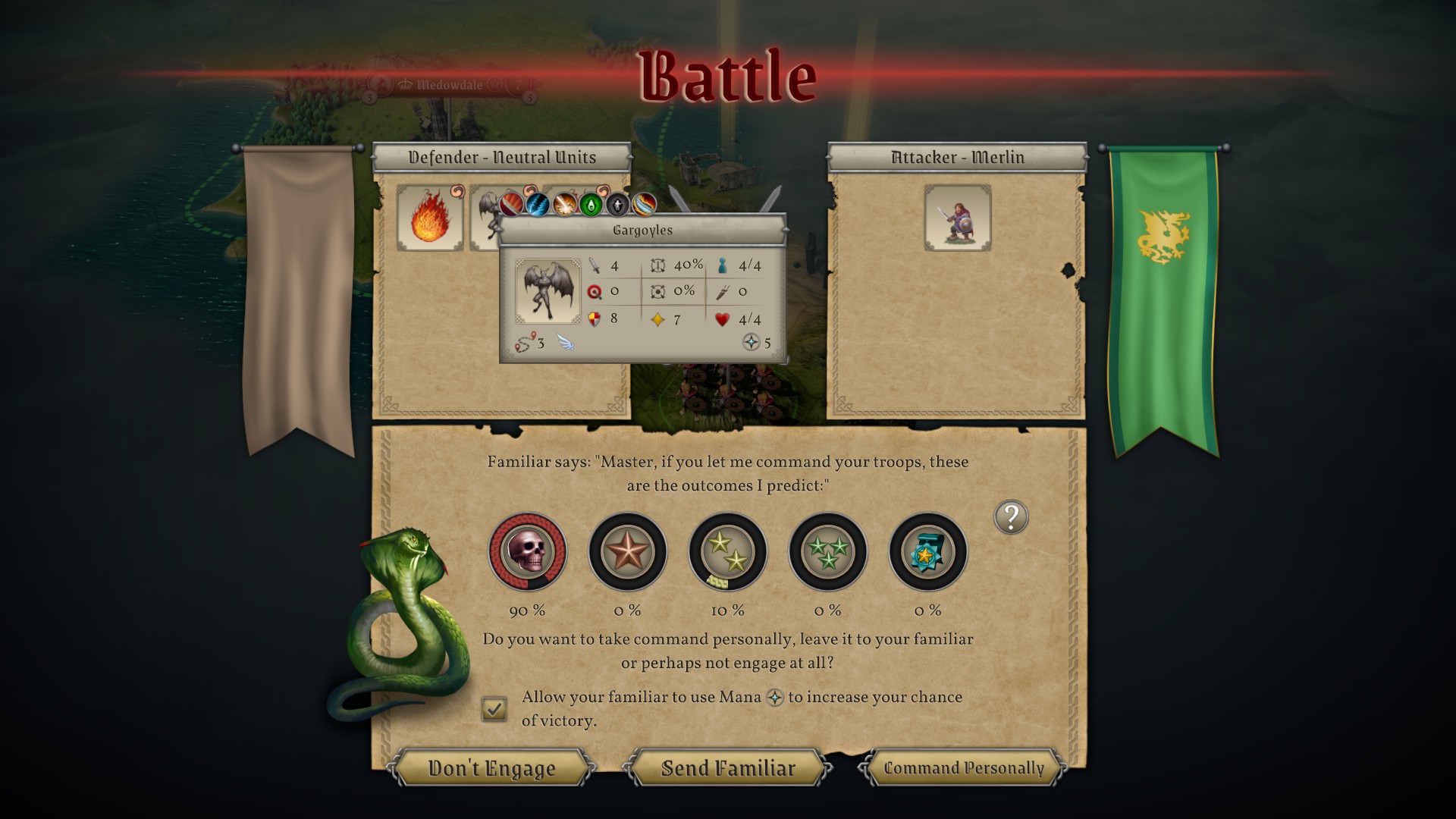
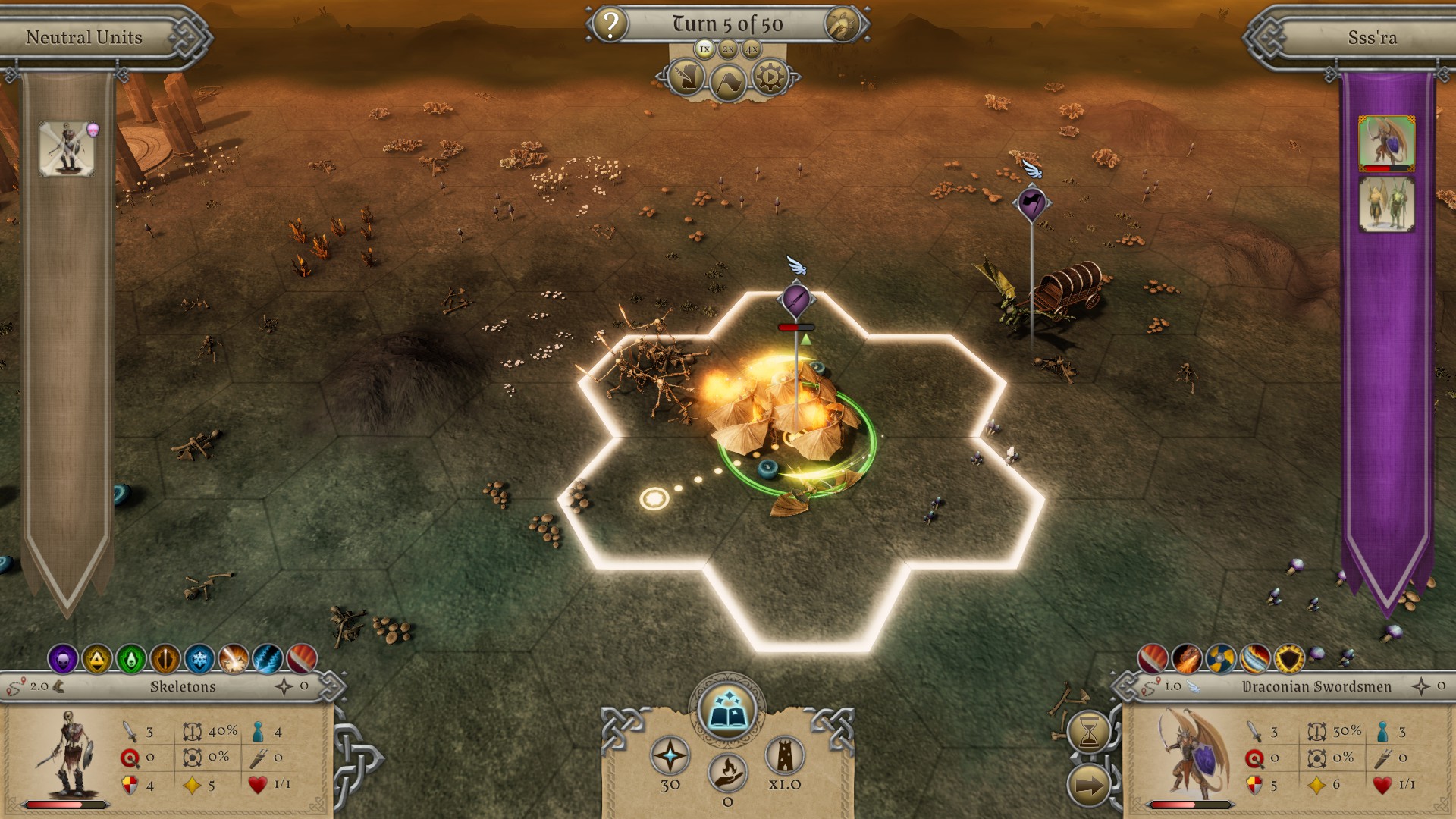
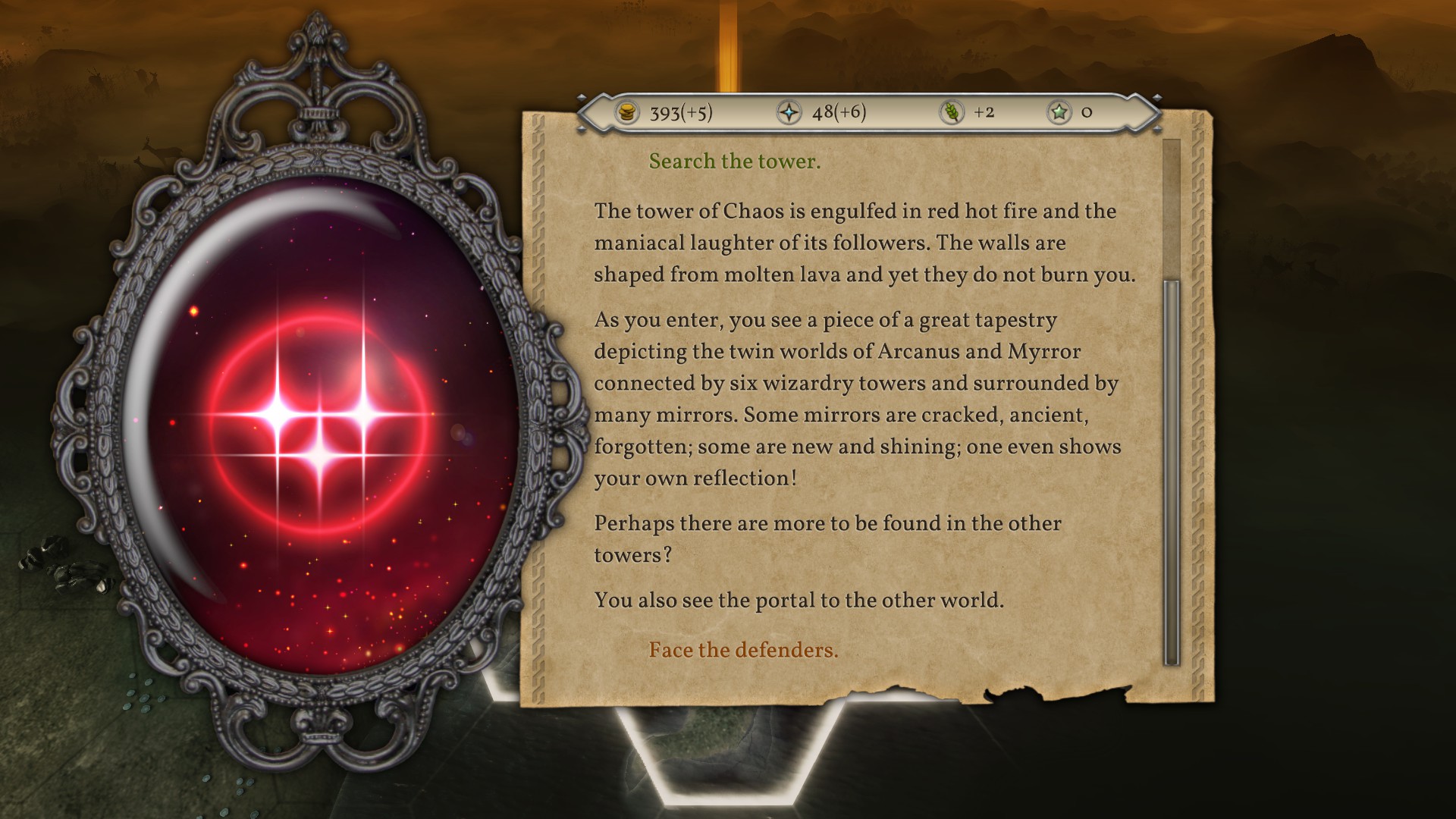
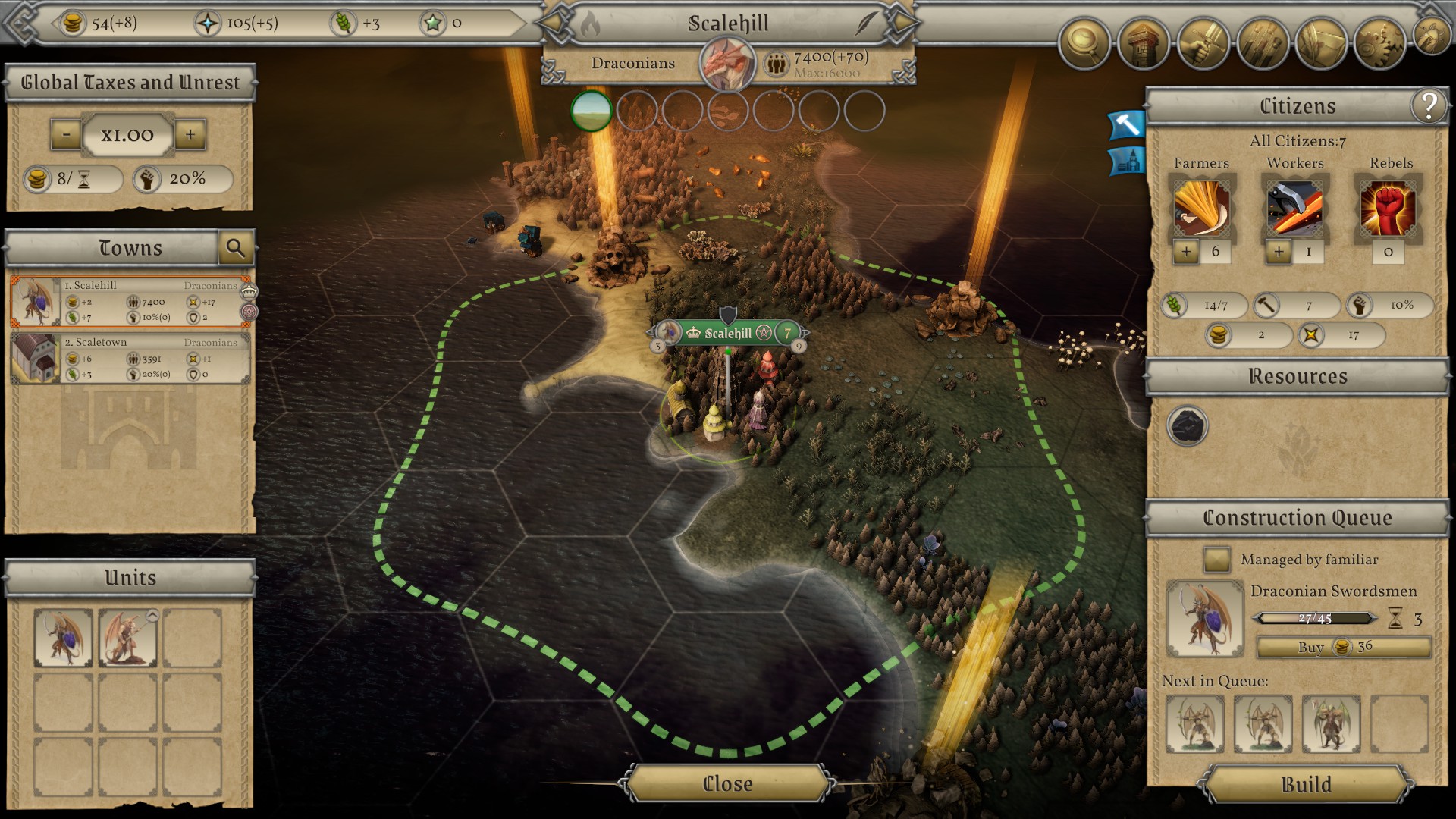
Master of Magic's secret sauce is in how completely you can begin to manipulate and combine the different mechanics underpinning your wizard and their chosen race. So first you try and get a decent spawn, somewhere that isn't too challenging, has lots of potential loot, and will allow some easy early expansion. You get a production line going, paying bribes to get the more important structures up quicker, and begin to turn your home base into an economic powerhouse that'll fund the rest.
So you could raise taxes in a city, which would normally increase unrest, but then cast Just Cause to rally the population and Wall of Fire to render it (relatively) safe from outside attack. That'll cost mana upkeep, but if you've got some magic sources it's a pittance.
You can directly attack enemy units or use stuff like warp magic which will decay and degenerate them, turning some raging monster into an enfeebled little piggy waiting to be roasted. Your buffs align on a similar spectrum, some just improving weapons while others transform units into elites, grant them completely inappropriate abilities like flying, or make weapons ludicrously effective against given sub-classes.
On one run I went all-in on necromancy. At the start of battle I'd fight normally then, when enemy units were weakened, cast a bunch of ghouls behind them that would turn dead enemies into ghouls themselves. This could combo with a Terror spell for true panic, and eventually you're able to get werewolves, more powerful soul-sucking ghouls, and then the one I wanted but wasn't able to get: wraiths. This army was a bit weak really, until the death magic started happening, at which point battles would completely flip. And looking at the stuff further up the spell tree I couldn't reach, it gets even wilder.
The point being that all of this stuff can and should be stacked at once. Why have halfling swordsmen, after all, when instead they could be flying swordsmen with holy-infused weapons led by a newly-minted mega unit? Soon those skeletons begin to seem laughable: because they are, really, especially when you start moving onto the fire elementals, magic-packing demons and inexplicably powerful rift guardians.
The beta build of Master of Magic has plenty to do, but it also limits you to three wizards and three factions, and it feels like the spells are quite limited too. The game lives or dies on just how wild it is able to get with unexpected combinations, and this build isn't the best indication of that: even though I managed to get some odd combinations going, it felt like the training wheels were on.
Another aspect of Master of Magic that never really factored into my playtime, even though it's at the heart of the game, is the dual world mechanic. The world here is really two worlds, with certain points allowing you to travel between the two (eventually you are able to do this at will), and the goal is to dominate both by the time the dust is settled.
This is a days-long commitment of play, and the Master of Magic beta build I was playing ends automatically after 100 turns. Given that the spells can take anywhere from 10 to 50 turns to research, and the rather glacial nature of progress in upgrading settlements over time, this made each of my runs a bit of a sprint to see as much as I could before things re-set, whereas you'd definitely play the finished game as more of a marathon.
Slitherine strategy games are definitely of a type, and Master of Magic is perhaps some historical exemplar of it. This game won't be giving Firaxis any sleepless nights, but you can see how in its seemingly endless cocktail of armies, world-altering spells and items there is the potential for one of those petri dish experiences: a game that may not look like much, but has the potential to create epic stories. Even if sometimes that story may be that your army walked into a cave, never came out, and then a bunch of demons razed your hometown to the ground.

Rich is a games journalist with 15 years' experience, beginning his career on Edge magazine before working for a wide range of outlets, including Ars Technica, Eurogamer, GamesRadar+, Gamespot, the Guardian, IGN, the New Statesman, Polygon, and Vice. He was the editor of Kotaku UK, the UK arm of Kotaku, for three years before joining PC Gamer. He is the author of a Brief History of Video Games, a full history of the medium, which the Midwest Book Review described as "[a] must-read for serious minded game historians and curious video game connoisseurs alike."

